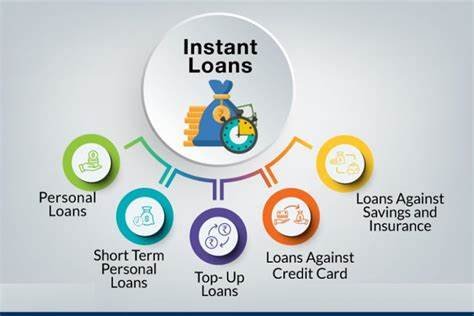As you embark on your educational journey, understanding the financial options available to you is crucial. One of the most common ways to fund higher education is through student loans. However, there are distinct differences between graduate and undergraduate student loans, and knowing these differences can help you make informed decisions about borrowing and repaying.
In this blog, we will explore the key differences between graduate and undergraduate student loans, the types of loans available for each, and how to choose the right loan for your needs.
What Are Undergraduate Student Loans?
Undergraduate student loans are designed for students who are pursuing their bachelor’s degree or equivalent at a college or university. These loans can cover the cost of tuition, fees, room and board, textbooks, and other educational expenses.
Types of Undergraduate Student Loans
Undergraduate students typically have access to several types of student loans, including:
1. Federal Direct Subsidized Loans
- Eligibility: These loans are available to students who demonstrate financial need.
- Interest Rates: The government pays the interest on these loans while the student is enrolled at least half-time, during the grace period (usually six months), and during deferment periods.
- Loan Limits: The annual loan limit for subsidized loans is typically lower than for unsubsidized loans.
- Repayment Terms: These loans come with relatively flexible repayment terms and the ability to defer payments while still in school.
2. Federal Direct Unsubsidized Loans
- Eligibility: These loans are available to all undergraduate students, regardless of financial need.
- Interest Rates: Unlike subsidized loans, the interest on these loans accrues while the student is in school.
- Loan Limits: The annual loan limit for unsubsidized loans is higher than that for subsidized loans, but students must pay the accrued interest.
- Repayment Terms: Repayment begins six months after graduation or dropping below half-time enrollment.
3. Federal Parent PLUS Loans
- Eligibility: These loans are available to parents of dependent undergraduate students.
- Interest Rates: These loans come with higher interest rates than other federal student loans, and the parents are responsible for repayment.
- Loan Limits: Parents can borrow up to the full cost of attendance (including tuition, room, board, and other expenses).
- Repayment Terms: Repayment begins immediately or can be deferred until the student graduates.
4. Private Undergraduate Loans
- Eligibility: These loans are offered by private lenders such as banks and credit unions.
- Interest Rates: Interest rates for private loans can vary based on the lender and the borrower’s creditworthiness. They can be fixed or variable.
- Loan Limits: Private loans may have higher or lower limits, depending on the lender and the student’s financial situation.
- Repayment Terms: Repayment terms are more flexible and can vary depending on the lender.
Pros of Undergraduate Student Loans
- Low or No Interest: Federal subsidized loans have no interest while you’re in school.
- Access to Federal Loan Forgiveness Programs: Certain federal student loans may be eligible for forgiveness or repayment assistance.
- Flexible Repayment Options: Federal loans offer flexible repayment terms, such as Income-Driven Repayment Plans.
Cons of Undergraduate Student Loans
- Lower Loan Limits: The amount you can borrow may not be enough to cover the full cost of attendance at some schools.
- Interest on Unsubsidized Loans: Interest accrues while you’re in school, which can increase your overall loan balance.
What Are Graduate Student Loans?
Graduate student loans are designed for students who are pursuing a graduate degree, such as a master’s or doctoral program. Since graduate students are generally considered to be more financially independent, the loan options and eligibility criteria differ from those available for undergraduate students.
Types of Graduate Student Loans
Graduate students can take advantage of both federal loans and private loans. Here are the most common options:
1. Federal Direct Unsubsidized Loans
- Eligibility: These loans are available to graduate students, regardless of financial need.
- Interest Rates: Graduate students must pay the interest on these loans while they’re in school, and interest rates are generally higher than undergraduate loans.
- Loan Limits: Graduate students can borrow more than undergraduates, with annual loan limits reaching up to $20,500.
- Repayment Terms: Repayment generally begins six months after graduation, and the loan can be repaid over a 10-25 year period.
2. Federal Graduate PLUS Loans
- Eligibility: Graduate students who do not have an adverse credit history can apply for these loans.
- Interest Rates: These loans have higher interest rates than Direct Unsubsidized Loans.
- Loan Limits: Students can borrow up to the full cost of attendance (tuition, fees, and living expenses).
- Repayment Terms: Repayment begins immediately after disbursement, but students may defer payments until after graduation.
3. Private Graduate Loans
- Eligibility: Private loans are offered by private lenders like banks and credit unions.
- Interest Rates: Interest rates on private loans for graduate students are typically based on the borrower’s credit history and can vary between fixed and variable rates.
- Loan Limits: Private loans may offer larger borrowing amounts, and students can borrow up to the total cost of attendance.
- Repayment Terms: Repayment terms vary depending on the lender and the specific loan.
Pros of Graduate Student Loans
- Higher Borrowing Limits: Graduate students can borrow more money compared to undergraduate students.
- Access to Federal Loan Forgiveness Programs: Graduate students with federal loans may be eligible for loan forgiveness programs, such as Public Service Loan Forgiveness (PSLF), if they work in qualifying public service jobs.
- Flexibility: Federal loans offer a range of repayment options, including Income-Driven Repayment Plans and the ability to defer payments during school.
Cons of Graduate Student Loans
- Higher Interest Rates: Graduate loans, especially Federal Graduate PLUS Loans, come with higher interest rates than undergraduate loans.
- Higher Debt Burden: Since graduate students can borrow more, they may find themselves with larger debt burdens upon graduation.
- Less Favorable Loan Terms for Private Loans: Private loans generally don’t offer the same protections and repayment options as federal loans.
Key Differences Between Graduate and Undergraduate Student Loans
While both graduate and undergraduate loans are designed to help students finance their education, there are several significant differences between the two:
1. Loan Amounts
- Undergraduate Loans: The loan limits for undergraduate students are generally lower, as the cost of tuition and living expenses is often lower compared to graduate programs.
- Graduate Loans: Graduate students can borrow larger amounts, with many loans covering the entire cost of attendance.
2. Interest Rates
- Undergraduate Loans: Interest rates for undergraduate loans are generally lower, particularly for federal subsidized loans.
- Graduate Loans: Graduate student loans come with higher interest rates, especially for Federal Graduate PLUS Loans.
3. Loan Eligibility
- Undergraduate Loans: Federal loans for undergraduate students are based on financial need, while private loans depend on the student’s creditworthiness.
- Graduate Loans: Graduate students have access to loans regardless of financial need, though eligibility for Federal Graduate PLUS Loans depends on credit history.
4. Repayment Terms
- Undergraduate Loans: Repayment typically begins after graduation, and flexible repayment options are available.
- Graduate Loans: Repayment also begins after graduation, but graduate students may face larger loan balances and longer repayment terms.
5. Loan Forgiveness
- Undergraduate Loans: Federal loans may be eligible for income-driven repayment plans and loan forgiveness programs.
- Graduate Loans: Graduate students may be eligible for loan forgiveness through public service programs, such as PSLF, if they work in qualifying positions.
How to Choose the Right Student Loan for Your Needs
Choosing the right student loan depends on a variety of factors, including the type of program you’re pursuing, your financial need, and your career goals. Here are a few tips to help you decide:
1. Maximize Federal Loans First
Federal loans, such as Direct Subsidized and Unsubsidized Loans, generally offer the best terms and protections. If you’re eligible, these loans should be your first choice.
2. Consider Graduate PLUS Loans for Additional Borrowing
Graduate students may need to borrow more than federal unsubsidized loans allow. Graduate PLUS loans are a good option for this, but be aware of the higher interest rates.
3. Avoid Private Loans if Possible
Private loans can have less favorable terms, such as higher interest rates and fewer repayment options. Use them only after exhausting federal loan options.
4. Research Loan Forgiveness Programs
Graduate students interested in public service careers should research loan forgiveness programs, such as PSLF, which could help reduce their debt burden.
5. Borrow Only What You Need
While it may be tempting to borrow the maximum amount allowed, it’s important to borrow responsibly. Focus on the amount needed to cover tuition and essential living expenses.
Conclusion
Both graduate and undergraduate student loans serve an important purpose in helping students finance their education, but they come with key differences in terms of loan amounts, interest rates, repayment terms, and eligibility. By understanding these differences, you can make informed decisions about which type of loan is right for you and manage your debt more effectively.
Before borrowing, take the time to explore all your options, consider federal loans first, and think carefully about how much debt you want to take on. With careful planning and thoughtful borrowing, student loans can help you achieve your educational goals and set you on the path to success.




